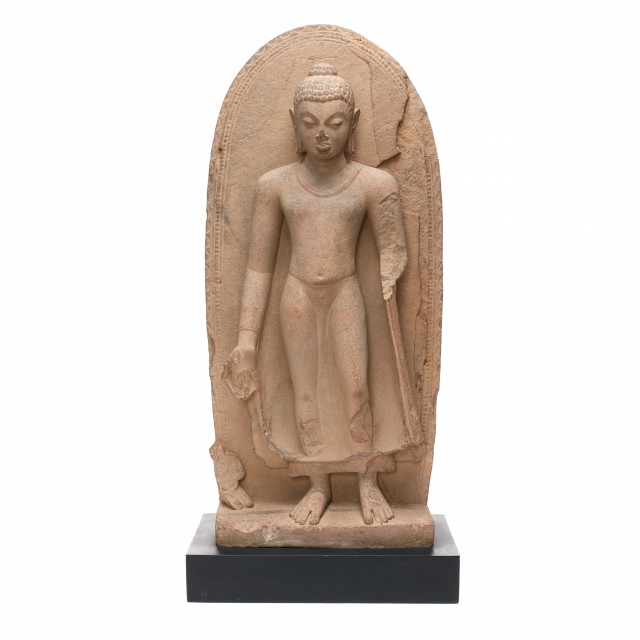
Buddha

Photography by Synthescape, Digital image © Asia Society
Buddha
About 475
Bihar (reportedly from Bodhgaya, perhaps from Nalanda), India
Sandstone
H. 34 1/8 x W. 17 5/8 x D. 6 in. (86.7 x 44.8 x 15.2 cm)
Asia Society, New York: Mr. and Mrs. John D. Rockefeller 3rd Collection, 1979.5
Licensing inquiries
Sarnath, the site where Shakyamuni Buddha gave his first teachings, emerged as one of the leading Buddhist centers of India during the Gupta period (ca. 319 - 500). Buddha sculptures from Sarnath are characterized by their graceful proportions, relaxed postures, clinging drapery, downcast eyes, and slight introspective smiles. The Gupta Sarnath style, particularly the depiction of the Buddha's thin, clinging robes, was influential not only throughout India, but was transported to Southeast Asia and adopted by artists there. In this image, the Buddha's right hand is lowered with the palm facing out in the gesture of gift-giving (varada mudra), and it appears from the position of the elbow that the missing left hand was raised with the palm open towards the viewer in the gesture of reassurance (abhaya mudra). The Buddha's webbed fingers are one of the thirty-two major signs (lakshanas) of his superhuman nature. Other such signs include the bump on top of his head (ushnisha), his snail shell-shaped curls, his very long arms, and his flat feet. The remains of small a kneeling figure at the Buddha's feet most likely represents the donor of the sculpture.

